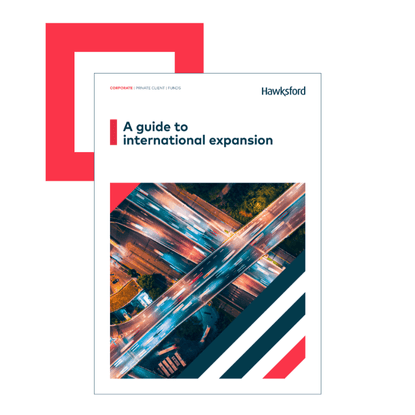Over the past few years, the national tax bureau has implemented a series of value-added tax (VAT) policies and regulatory improvements to streamline VAT processing in China and better align China’s VAT system with international principles.
The continued reduction of VAT rates demonstrates China’s commitment to lightening the overall tax burden and foster a more tax-friendly business environment. China’s VAT system is still evolving at a rapid speed; it is expected to be subject to further changes to improve transparency, compliance, and ease of doing business.
This article provides an overview of VAT tax rates and explains the two types of VAT taxpayers in China while aiming to help foreign companies choose the right type for their business.
Value-added tax (VAT) in China
Value-added tax in China refers to an indirect tax levied on enterprises and individuals during the sale of goods, services, intangible assets, immovable properties, processing, repair, assembling services, or import of goods within the territory of the People's Republic of China.
VAT taxpayers
VAT taxpayers fall into two categories: general VAT taxpayers and small-scale VAT taxpayers.
- General VAT taxpayers refer to enterprises whose accumulated taxable income during a consecutive period of no more than 12 months, or four quarters, exceeds RMB 5 million or those who have a sound accounting system. Multiple VAT rates of 13%, 9%, and 6% apply to general VAT taxpayers. The input VAT can be credited against the output VAT.
- Small-scale VAT taxpayers refer to enterprises whose accumulated taxable income during a consecutive period of no more than 12 months, or four quarters, are below RMB 5 million or without a sound accounting system. A 3% levying rate is applied to small-scale VAT taxpayers, but they cannot deduct input VAT from output VAT.
It is worth noting that:
- Newly registered companies or companies whose accumulated taxable income during a consecutive period of no more than 12 months, or four quarters, do not exceed RMB 5 million can voluntarily apply to be recognised as VAT general taxpayers, provided that they are capable of setting up legitimate, valid, and accurate bookkeeping and can provide accurate tax information to local tax authorities.
- If a small-scale taxpayer derives revenue whose accumulated amount for the consecutive 12 months, or four quarters, reaches or exceeds RMB 5 million, it is required to register as a general VAT taxpayer within 15 days after the filing due date of the period in which the taxpayer meets the above threshold, or it shall be compulsorily ratified as a general VAT taxpayer.
| Type | Small-scale VAT taxpayers | General VAT taxpayers |
| Taxable income | Equal to or less than CNY 5 million | More than CNY 5 million |
| VAT rate | 3% (5%* on certain occasions) | 13%, 9%, 6% and 0% |
| VAT payable | Tax-exclusive income x VAT levying rate (3%) | Current output VAT - current input VAT |
| VAT declaration | Monthly/quarterly | Monthly |
(*Remark: A 5% VAT rate applies to sales of immovable properties and provision of real estate rental services.)
From 1 April 2021 to 31 December 2022, small-scale taxpayers in China whose monthly sales volume does not exceed RMB 150,000 (or quarterly sales volume does not exceed RMB 450,000) are exempt from VAT.
VAT rates
China maintains a multi-rate VAT system of 13%, 9%, 6% and 0%. The standard VAT rate of 13% is applied to the sale and importation of most goods, the provision of repair, replacement, processing services, and the leasing of tangible moveable assets unless otherwise stipulated by tax authorities. Reduced VAT rates apply to items as outlined below.
| Tax items | VAT rate | |
| Most goods and some services |
|
13% |
| Real estate, transportation, postal and agriculture |
|
9% |
| Services |
|
6% |
| Small-scale taxpayers | For most goods and services, a uniform rate of 3% applies to small-scale VAT taxpayers | 3% (except certain actual transactions applicable to 5% VAT rate) |
| Exports | Export of goods and services (except where otherwise stipulated by the State Council) | 0% |
How to choose between a VAT small-scale taxpayer and a VAT general taxpayer
When setting up a Chinese entity, tax registration follows shortly after obtaining the business license. The regulation stipulates that taxpayers engaged in production or business operation shall, within 30 days from obtaining their business licences, file written applications for tax registration with the competent tax authorities in the localities where the production or business operation is conducted or where the tax obligation occurs.
As part of the incorporation process, companies must declare their taxpayer’s status at the very beginning of the company registration. Choosing between a VAT small-scale taxpayer and a VAT general taxpayer becomes the main question for many foreign companies unfamiliar with the Chinese tax system.
The significant differences are listed as follows:
- General taxpayers can deduct their input VAT from output VAT at a specific rate, while small-scale taxpayers cannot.
- A reduced 3% VAT rate is applied to small-scale taxpayers, while general taxpayers are subject to higher VAT rates of 13%, 9%, and 6%.
- To claim input VAT credits in China, the business must be registered as a general VAT taxpayer and obtain a particular VAT invoice.
Therefore, foreign investors shall decide based on the estimated business income while considering requirements from clients who might specifically request a particular VAT invoice. Keep in mind that general VAT taxpayers cannot be converted to small-scale VAT taxpayers unless otherwise approved by the tax authority.
How can Hawksford help?
Hawksford is an established provider of company registration and outsourced corporate services in China. With more than 100 multilingual professionals based in five offices, we can offer our international clients the very best local knowledge and expertise. Hawksford has more than ten years of experience providing corporate accounting and taxation solutions. Our skilled team of experts can provide you with up-to-date and relevant advice. We offer a broad range of solutions that can be customised to both individual and companies' unique needs. You can leave all your day-to-day accounting and tax worries to us so that you can focus on your business.
Our specialised services include but are not limited to:
- Tax registration
- Corporate and personal tax calculation and filing
- Tax compliance, advisory, and implementation
- Monthly and yearly bookkeeping and taxation services

Updated on



